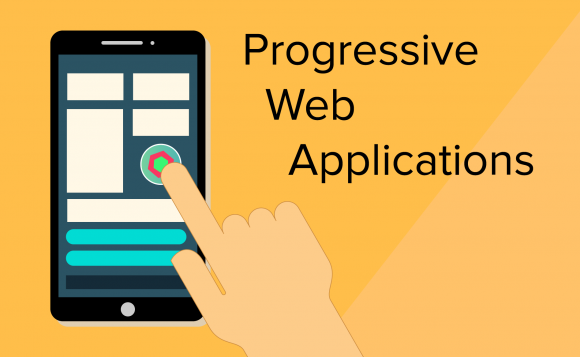
At some point, when someone is browsing through a website, have you ever come across an “Add to Home Screen” banner? When you click on the banner, the application installs itself. When you open the application, you have the same experience, but on your mobile phone. What you have is a mobile app that has been downloaded from a web application. You are doing all this without using an app store. Getting the app was very easy, and you can browse any content even without any internet connection. Generally, you can access the app offline. This is called progressive web applications. A progressive web application allows you to install applications from your browser window, and the app will be available of your phone like a native app, which works offline.
The app is designed in a way to make a web application function in the same way as a desktop or another mobile application. The main aim of the application is to ensure people have an experience that is similar to the native mobile application. Progressive web applications can perform the same functions on an iPhone 8 or any other iPhone phone.
Reasons why you need the progressive web application.
It is fast — Progressive web applications provide fast experiences to all the users. When the user downloads the application to the moment they start using the app, everything happens very fast. It is possible for the user to cache the data, and it will be very fast to start the application again without using the network.
Provides an integrated user experience — Progressive web applications naturally behave like native applications. They are found in the user’s home screen and send notifications like other native applications. They also have access to the functionality of the device. When the user uses the progressive web applications, the experience is seamless and integrated.
Offers reliable experience — Using the progressive web applications the user can paint a picture on the user’s screen without the availability of the internet.
It is engaging — The application can send notifications to a user, it can keep the user notified and engaged.
Ways to build the progressive web application
Having a web app manifest
This means the file that can give all the information about the web application. It contains various information like the icon of the application, which can be installed by the user in the app drawer. It also has a background colour, the name of the app. The user can easily write the app manifest themselves, but they can use various tools to generate one.
Service workers
These are event-driven workers that run the background of the application, and they are the proxy between the network and the application. With the application, the user can intercept the network requests and cache the information in the background. Using the application, the user can load data for offline use. The service workers are like a JavaScript that performs various tasks like fetch and install.
Icon
When the user installs the progressive web application in their application drawer, they get an icon. The manifest tool helps in coming up with icons for different formats.
Served over HTTPS
For a web application to be a progressive web application, it should be served over a secured network. With many services like Cloudflare and LetsEncrypt, it is effortless to get an SSL certificate. The application is a secure site that can establish the user’s web application as a trusted site for various users demonstrating trust and reliability, which avoids middleman attacks.
Advantages of progressive web applications
It allows offline mode
Most people know, most websites do not work without access to the internet. Most mobile apps are self-contained, which allows the users to browse the app when the user is not online. This increases the engagement and availability of the application. Using the offline mode, the user can get any information, which is automatically saved after the user logs off. The offline page also has a brand logo with several brand features. The progressive web application can help a business that has a product catalogue that most people can view in the offline mode. This will lead to an increase in customers’ retention rates.
It is designed like an app
One significant advantage of the progressive web application is that they are designed like a mobile app, while still working as a website. When developing the progressive web application, every user has a chance to determine how they want the app to look like. The user has control over the framework of the application as compared to other websites.
It has an improved performance
The progressive web applications are very fast due to the underlying technology caches, stylesheets, images and other contents found on their websites. Due to all these factors, the user experiences a mind-blowing performance.
Zero install
When the user installs the progressive web applications, they do not have to download it as compared to other mobile applications. The user does not have to access google play or app store to get the app. This implies that with the progressive web application, the user receives their icon on their phones or tablet. This is similar to the mobile applications, but the user does not have to go through the slow app store submission process. This means that progressive mobile applications are convenient for users who are not familiar with applications.


